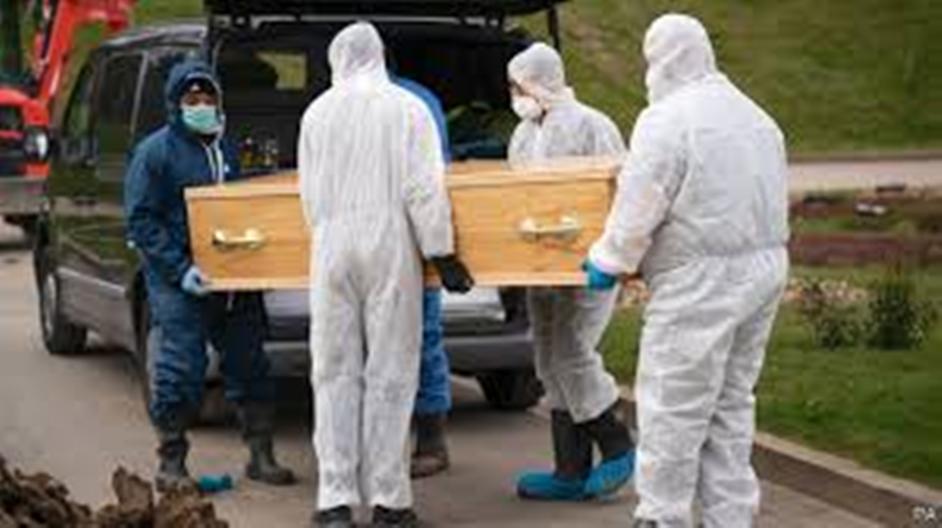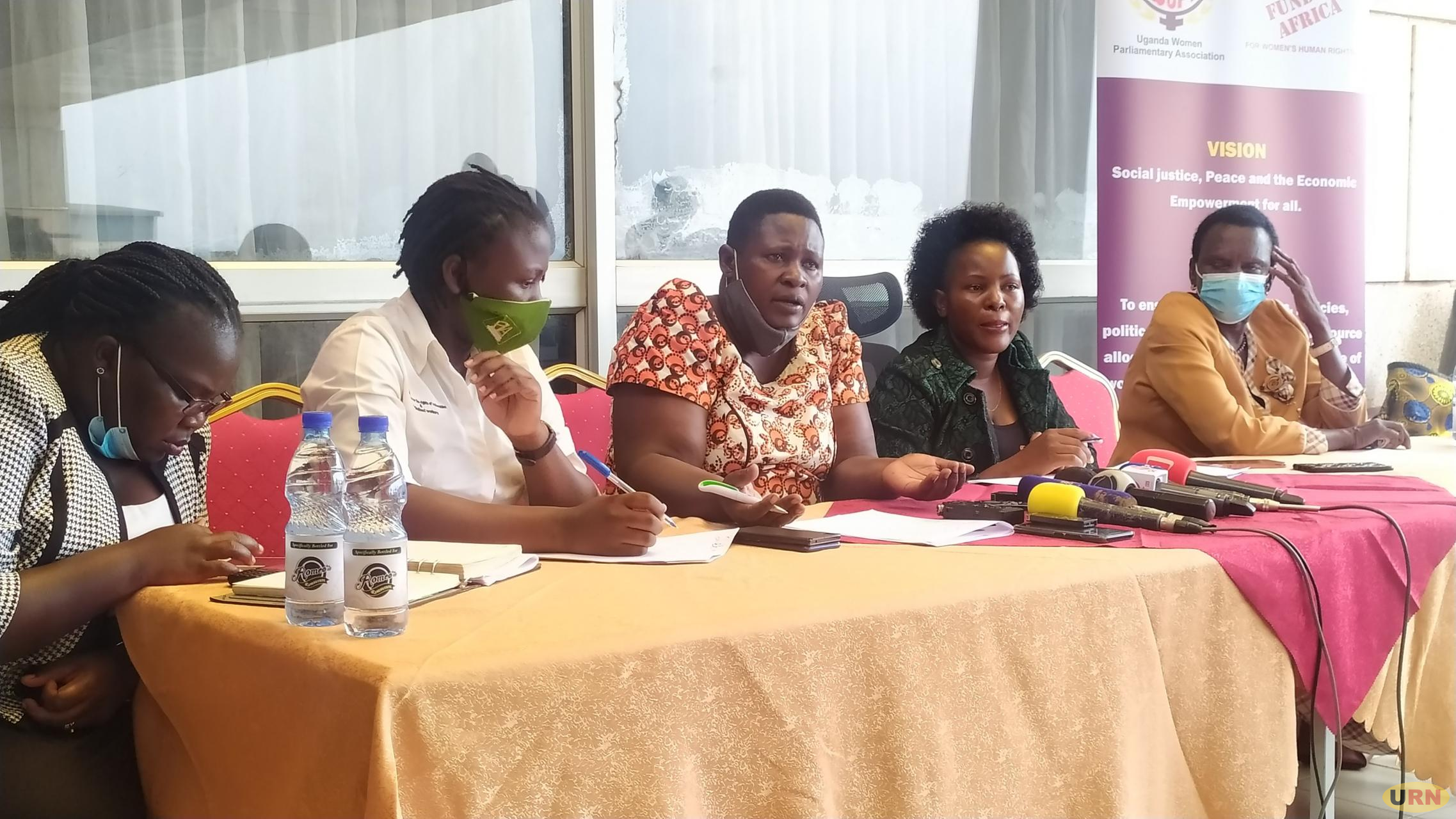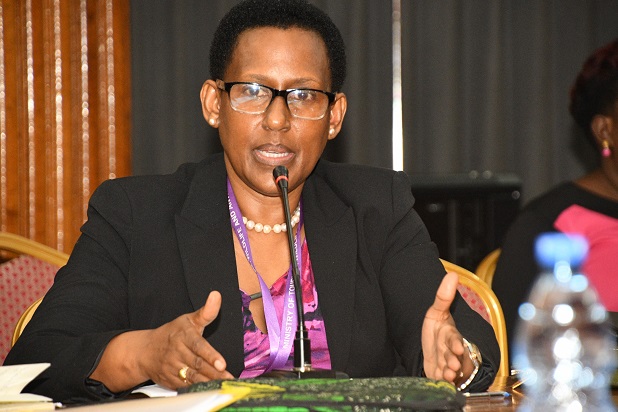Burial of COVID-19 victim in Namisindwa district
Uganda lost control of the COVID-19 pandemic in August 2020 after the government opted to re-open certain sectors that had been closed, failed to trace contacts and rolled out a political campaign. This is according to the Senior Presidential Advisor of Epidemics, Dr Monica Musenero.
Musenero, an epidemiologist by training, says that the country had full control of the disease between March and July 2020. During this time, she says, it was easy to trace all the COVID-19 cases and their contacts for care and quarantine, which gave the country a better chance to control the disease.
She points to the poor deployment of field epidemiologists who are critical in tracing a disease. During the response, three epidemiologists were deployed at the national command centre to oversee the tracing, while at the district level, many of the surveillance teams were led by the Resident District Commissioners.
Musenero says this was a gross oversight because, senior epidemiologists, people with experience were left out and tracing the disease was left in the hands of young people, who had no previous training in tracing a disease.
Uganda recorded its first case of COVID-19 in March 2020. At the time, President Yoweri Kaguta Museveni had instituted a nationwide lockdown which led to the closure of borders, educational institutions, bars and entertainment places and a ban on public transport.
A total of 417 cases were reported from March, when lockdowns were instituted, to May 2020. But the numbers escalated as soon as restrictions were eased, to1,818 in August, following the reopening of public transport. It is during the same period that Uganda lost its first COVID-19 patient, a 34-year-old woman who had been suspected to have suffered an asthma attack.
The second death was reported three days later when an 80-year-old woman, who had been admitted for a week at Platinum Hospital with hypertension passed on. It was discovered long after her death that she had succumbed to COVID-19. According to Musenero, this is the time when the country needed to carry out more contact tracing but many of the field teams had already lost morale.
Meanwhile, other scientists blame the slip, on clashes between science and politics. Dr Misaki Wayengera, the head of the ministerial scientific COVID-19 committee said that in August when the country recorded a spike in cases, the scientists had advised the government to institute a second lockdown to forestall the spread, but they were overruled by politics.
“We thought that would help us to regain control by controlling the movement of individuals in and out of the city but the political side was against this. We had just come out of a national lockdown that had economically drained the country,” Dr Wayengera recalls.
According to Wayengera, even if the country had the best hospitals with countless Intensive Care Unit beds, the only way to effectively control the spread of the disease was by adhering to SOPs, like maintaining a safe distance between individuals, wearing face masks and washing hands. However, he says the moment the lockdown was lifted, many forgot the need for the measures and the disease spread in communities like a wildfire.
He added that while science showed that having a presidential election was a risk that could lead to a spike in cases, the fears were pushed aside when politicians argued that the elections could not be skipped. If they were skipped, the country would have to undergo a state of emergency.
“We would have liked to postpone the elections but we were told that doing that would throw the country into a state of emergency, a position that “we could not risk,” Dr Wayengera explains.
As a result of some of these clashes, over 27,000 cases were reported during the political season from November 2020 to January 2021, with an average of 400 cases reported every day. However, at the height of the pandemic, the health ministry decided to stop contact tracing. Dr Charles Olaro, the Director of Curative Services, said they could no longer trace for contacts because it had become expensive to quarantine them. They were only able to trace 10 per cent of those who tested positive.
Shortly after this, the health ministry in a move aimed at reducing congestion in hospitals introduced Home-Based Care. During this model, patients who tested positive but asymptomatic would be treated at home with the supervised care of a medical officer. However, according to Dr Grace Ssali of the Uganda Health Federation, this was a big gamble that didn’t really pay off.
“As we speak today, the health ministry has no idea of how many people are on home-based care. They do not know how widespread the disease is, they cannot trace patients receiving care at home. In some aspects, it looks like they have lost control of the disease,” she says.
Dr Henry Mwebesa, the Director-General of Health Services equally acknowledged that it is hard to tell the number of people on Home-based care since many patients are not reporting to health facilities. Today the numbers in hospitals have decreased to an average of eight cases, with a drastic decline in admitted cases.
Prof Rhoda Wanyenze, a member of the COVID-19 ministerial Scientific committee and head of modelling said that although the cases have now gone down, the country is ripe for another wave. However, she adds that it would be hard to pinpoint the exact time when that wave would come.
Benard Lubwama, the head of disease surveillance at the health ministry says that when field teams failed to detect cases, many of them ended up in hospitals, yet still, the failure to detect cases in communities, also led to deaths, which could have been avoided. According to Lubwama, some cases slipped through the system due to a break in the surveillance system.
“There was a general laxity in communities and health centres. The health facilities in the first two cases did not alert us. Both cases were within walking distance of either district offices or the Ministry of Health, but none of them was suspicious enough to raise an alarm,” he explained.
To date, 40,705 cases of COVID-19 with 334 deaths have been reported in the country.
-URN





